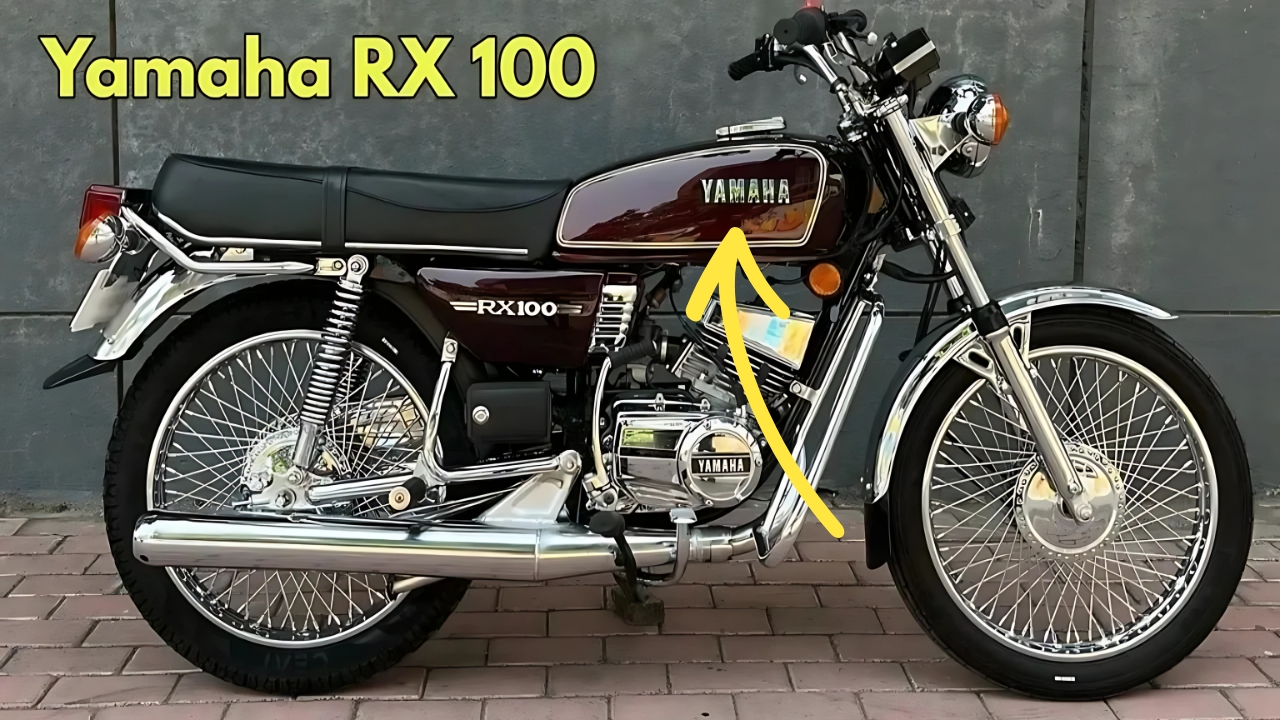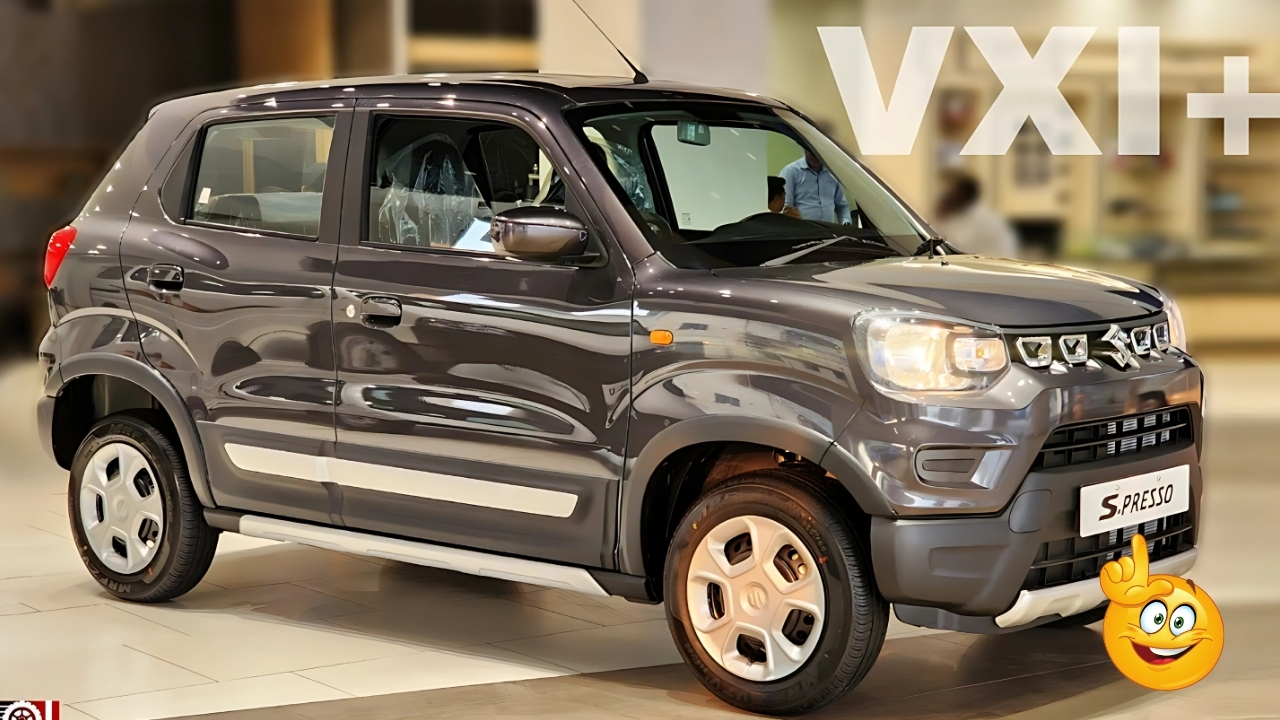Yamaha RX 100: the colorful tapestry of India’s motorcycling history, few machines have left as indelible a mark as the Yamaha RX 100.
This lightweight two-stroke marvel didn’t just transport riders from point A to point B—it transported an entire generation into a new relationship with motorcycling.
Having grown up watching my uncle’s cherished black RX 100 parked proudly in our family compound, and later experiencing the thrill of riding a restored model myself, I’ve developed both an emotional connection and a technical appreciation for this iconic machine that continues to command respect decades after its production ceased.
Yamaha RX 100: The Genesis: Japan’s Gift to Indian Roads
The story of the RX 100 begins not in India but in Japan, where Yamaha had been perfecting its small-displacement two-stroke motorcycles through the 1970s and early 1980s.
The RX 100 was essentially an evolution of Yamaha’s global RX series, adapted specifically for the Indian market through a collaboration between Yamaha Motor Company and Escorts Group.
When the motorcycle was introduced to Indian consumers in 1985, the timing couldn’t have been more perfect.
India was at the cusp of economic liberalization, with a growing middle class hungry for products that offered both utility and a touch of aspiration.
The motorcycle market was dominated by utilitarian options like the Rajdoot and Yezdi, which prioritized ruggedness over refinement, and the fuel-efficient but underpowered Ind-Suzuki range.
Into this landscape came the RX 100—sleek, nimble, and with performance credentials that seemed almost magical for its 100cc displacement.
My neighbor Rajan, who purchased one of the first batches in 1985 and remarkably still owns the same motorcycle, recalls the day he brought it home: “People from three streets away came just to look at it. The shape was different, the sound was different—everything about it felt special.”
Engineering Excellence in a Simple Package
What made the RX 100 extraordinary wasn’t cutting-edge technology or premium components, but rather the perfect harmony of basic engineering elements executed with exceptional attention to detail.
The heart of the machine was its 98cc air-cooled, two-stroke, single-cylinder engine. On paper, the specifications seemed modest:
11 bhp of maximum power at 7,500 rpm
10.39 Nm of peak torque at 6,500 rpm
Reed valve induction system
4-speed constant mesh transmission
But these numbers tell only part of the story. The engine’s performance was transformed by its remarkably light weight—the entire motorcycle tipped the scales at just 103 kg.
This gave the RX 100 a power-to-weight ratio that was unmatched in its segment, translating to acceleration that felt almost alarming for a small-displacement commuter motorcycle.
The chassis was equally significant in creating the RX 100 experience. The single-downtube frame with a rectangular swing arm struck an ideal balance between rigidity and flex, allowing the motorcycle to feel planted in straight lines yet nimble through corners.
The suspension—telescopic forks up front and twin shock absorbers at the rear—was tuned for responsiveness rather than plushness, communicating road texture to the rider without becoming harsh.
The braking setup was basic even by 1980s standards: a 110mm drum brake up front and a 110mm drum at the rear.
Yet the lightweight nature of the motorcycle meant these simple brakes provided adequate stopping power when properly maintained, though they demanded respect and anticipation from the rider—a characteristic that taught many young riders the value of smoothness and foresight.
The Riding Experience: Simplicity Meets Sensation
Riders who experienced the RX 100 in its heyday often struggle to articulate precisely what made it special.
Rajesh Sharma, a motorcycle collector who maintains three different RX 100s from different production years, offered this insight when I visited his collection: “It’s like trying to explain why a particular song moves you. You can describe the notes, the rhythm, the lyrics—but that doesn’t capture the feeling it creates.”
That said, certain characteristics defined the RX 100 experience:
First was the immediate throttle response characteristic of two-stroke engines. Unlike the progressive power delivery of four-stroke motorcycles, the RX 100 responded to throttle inputs with an urgency that made even mundane commutes feel exciting.
This responsiveness created a deep connection between rider and machine—every input had an immediate, perceptible consequence.
Second was the distinctive exhaust note—a high-pitched, resonant ring that earned it the nickname “ring-ding” in many parts of India.
This sound became so closely associated with the motorcycle that enthusiasts could identify an approaching RX 100 without seeing it.
Combined with the visible blue smoke from the exhaust (a hallmark of two-stroke engines), the RX 100 created a multisensory experience that engaged riders and bystanders alike.
Third was the lightweight handling that made the motorcycle feel like an extension of the rider’s body rather than a separate machine.
Threading through traffic or navigating winding roads, the RX 100 changed direction with minimal effort, encouraging a flowing riding style that rewarded finesse over force.
Vipin Miglani, who commuted on an RX 100 for over a decade before reluctantly replacing it with a modern motorcycle, told me during our conversation at a vintage bike meet: “Modern bikes are objectively better in almost every measurable way—they’re faster, more efficient, more reliable, safer. But none of them make me smile the way my RX did. None of them feel as alive.”
Cultural Impact: Beyond Transportation
To understand the RX 100’s significance in Indian motorcycling culture, one must look beyond its mechanical attributes to how it transformed social perceptions of motorcycling.
Before the RX 100, motorcycles in India were primarily viewed as utilitarian devices—tools for transportation rather than objects of desire or self-expression.
The RX 100 shifted this narrative by becoming a status symbol and lifestyle statement, particularly among young men in smaller towns and cities where it represented achievement and aspiration.
This cultural impact was amplified by the motorcycle’s frequent appearances in Indian cinema, especially in Tamil and Telugu films, where it became a visual shorthand for youthful rebellion and romance.
Countless movie scenes featured protagonists performing dramatic stunts or pursuing love interests on the iconic motorcycle, cementing its place in popular imagination.
The motorcycle fostered vibrant owner communities long before the advent of social media. RX 100 owners would gather for informal meets, exchange maintenance tips, and showcase modifications to their machines.
These communities persisted even after production ceased, evolving into the restoration and vintage motorcycle clubs that continue to celebrate the model today.
Crucially, the RX 100 democratized performance. Before its arrival, experiencing genuinely exciting motorcycle performance required significant investment in larger, more expensive machines.
The RX 100 delivered thrills at an accessible price point, introducing countless riders to the emotional connection that can exist between human and machine.
The Decline: Changing Times and Regulations
Despite its popularity, the RX 100’s days were numbered as India began implementing stricter emission norms in the late 1990s.
The two-stroke engine, for all its performance advantages, was notoriously inefficient and polluting compared to four-stroke alternatives.
Yamaha attempted to evolve the model with variants like the RX 135, RX-Z, and RXG, which featured minor updates while retaining the essential character of the original.
However, by the early 2000s, production of the entire RX series had ceased in India as emission regulations rendered the two-stroke engine commercially unviable.
Simultaneously, consumer preferences were shifting toward fuel-efficient four-stroke motorcycles with modern features.
The era of performance-oriented two-strokes seemed to be fading into history, relegated to the garages of enthusiasts and the memories of those who experienced them firsthand.
Resurgence: From Obsolescence to Cult Status
Remarkably, the end of production did not diminish the RX 100’s cultural impact. If anything, it enhanced the motorcycle’s mystique, transforming it from a common sight on Indian roads to a coveted collector’s item.
In the years following its discontinuation, a curious phenomenon occurred—the value of well-maintained RX 100s began to rise rather than fall.
This appreciation accelerated as the motorcycle transitioned from “used vehicle” to “vintage classic,” with particularly clean examples now commanding prices several times higher than the motorcycle’s original cost.
Restoration has become a specialized craft, with workshops dedicated exclusively to bringing these decades-old machines back to their former glory.
Enthusiasts willingly pay premium prices for authentic parts and expert labor, seeing these costs as investments rather than expenses.
The aftermarket for RX 100 parts remains surprisingly robust, with both reproduction components and new old stock (NOS) original parts available through specialist suppliers.
Some enthusiasts have even begun 3D printing certain components that are otherwise impossible to source, applying modern technology to preserve vintage engineering.
This resurgence reflects more than mere nostalgia—it represents a recognition that the RX 100 offered a pure, analog motorcycling experience increasingly absent in the digital age.
As modern motorcycles grow more complex, with electronic rider aids and digital interfaces mediating the connection between rider and machine, the mechanical simplicity of the RX 100 holds renewed appeal.
Comparative Analysis: The RX 100 in Historical Context
| Feature | Yamaha RX 100 (1985) | Rajdoot 350 (1980s) | Ind-Suzuki AX100 (1980s) | Yamaha RD 350 (1983) | Modern Yamaha YBR 125 (2010s) |
|---|---|---|---|---|---|
| Engine Type | 98cc 2-stroke Single | 350cc 2-stroke Single | 98cc 2-stroke Single | 350cc 2-stroke Twin | 125cc 4-stroke Single |
| Power Output | 11 bhp @ 7,500 rpm | 16 bhp @ 5,250 rpm | 8.5 bhp @ 6,500 rpm | 30.5 bhp @ 6,750 rpm | 10.4 bhp @ 7,500 rpm |
| Weight | 103 kg | 187 kg | 105 kg | 154 kg | 125 kg |
| Power-to-Weight Ratio | 106.8 bhp/ton | 85.6 bhp/ton | 81 bhp/ton | 198 bhp/ton | 83.2 bhp/ton |
| Transmission | 4-speed | 4-speed | 4-speed | 6-speed | 5-speed |
| Top Speed | 100+ km/h | 110 km/h | 90 km/h | 150+ km/h | 105 km/h |
| Fuel Efficiency | 40-45 km/l | 25-30 km/l | 45-50 km/l | 25-30 km/l | 65-70 km/l |
| Original Price (when sold) | ₹18,000 (1985) | ₹22,000 (1985) | ₹16,000 (1985) | ₹18,000 (1983) | ₹48,000 (2010) |
| Current Market Value (Good condition) | ₹80,000-2,50,000 | ₹40,000-1,00,000 | ₹30,000-70,000 | ₹1,50,000-4,00,000 | ₹30,000-45,000 |
| Key Characteristic | Perfect balance | Rugged workhorse | Economy focused | Performance legend | Modern reliability |
This comparison illustrates the RX 100’s unique positioning in Indian motorcycling history. While not as powerful as the legendary RD 350 or as economical as modern four-strokes, it offered an unmatched combination of accessibility, performance, and charisma that helped it transcend its utilitarian origins to become a cultural touchstone.
Key Factors Behind the RX 100’s Legendary Status
Perfect Timing: The RX 100 arrived when Indian consumers were ready for something beyond basic transportation but before the market became saturated with performance-oriented options.
Accessible Performance: It democratized the thrill of acceleration and speed, offering an exciting riding experience at a price point attainable for middle-class consumers.
Distinctive Character: The immediate power delivery, lightweight construction, and characteristic exhaust note gave the RX 100 a personality that competitors couldn’t match.
Mechanical Simplicity: The straightforward design made the RX 100 easy to maintain and modify, fostering a culture of ownership that extended beyond mere transportation.
Cultural Embedding: Its frequent appearances in films, music, and other media cemented the RX 100’s place in Indian popular culture beyond the motorcycling community.
Versatility: Despite its performance orientation, the motorcycle remained practical for everyday use, serving as both commuter and weekend thrill machine.
Visual Distinctiveness: The clean, timeless design aged gracefully, allowing the RX 100 to maintain its visual appeal even as automotive styling trends evolved.
The Legacy Continues: Modern Echoes
The RX 100’s influence extends beyond the vintage motorcycle community. Modern manufacturers have recognized the appeal of its formula, with several recent models drawing inspiration from its approach:
The Yamaha FZ series, while thoroughly modern in technology, echoes the RX 100’s focus on lightweight handling and accessible performance.
Royal Enfield’s Classic 350, though drastically different in engine configuration and riding experience, has similarly cultivated a lifestyle and community around a distinctive motorcycling character.
The recent trend toward neo-retro motorcycles like the Jawa and Honda H’ness CB350 reflects a renewed appreciation for the mechanical simplicity and distinctive character that defined the RX 100 era.
Rumors periodically surface about Yamaha considering a revival of the RX name for the Indian market. While a direct reintroduction of a two-stroke motorcycle seems highly unlikely given current emission standards, there’s speculation about a modern four-stroke interpretation that might capture something of the original’s spirit.
Such a model would face the challenging task of living up to a legend. The immediate throttle response, distinctive sound, and mechanical simplicity that defined the original RX 100 experience are products of its two-stroke engine—characteristics that modern four-stroke technology struggles to replicate regardless of electronic enhancements.
Yamaha RX 100: Conclusion: More Than Mere Transportation
What elevates the RX 100 from successful product to cultural icon is how it transcended its functional purpose to become something more meaningful in the lives of its owners and in India’s motorcycling narrative.
For those who rode it during its production years, the RX 100 represented freedom, youth, and possibility—emotions that transcend the mere specifications of a 98cc engine in a simple chassis.
For today’s enthusiasts, whether restoring original examples or simply appreciating them at vintage rallies, it represents a connection to an era when the relationship between rider and machine was direct, unmediated by electronics and untamed by emission controls.
In our increasingly digital, sanitized world, the RX 100’s analog purity holds renewed appeal. Its character wasn’t engineered through rider modes or traction control parameters but emerged organically from the fundamental properties of its construction—the inherent responsiveness of a two-stroke engine, the natural feedback of simple suspension, the directness of mechanical drum brakes.
Perhaps that’s why, nearly four decades after its introduction and decades after its production ceased, the distinctive ring-ding of an RX 100 still turns heads on Indian streets.
It’s more than nostalgia; it’s a recognition that some experiences cannot be replicated through technological advancement alone—that sometimes, the simplest solutions create the most profound connections.
The RX 100 may be a relic of another era in engineering terms, but the feelings it evokes—the immediate connection between throttle hand and rear wheel, the smile it induces on open roads—remain timeless. And in that emotional resonance lies the true engineering achievement of this humble yet extraordinary motorcycle.














